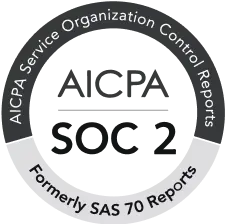A 2022 report by Chaserhq revealed that 87% of businesses worldwide reported receiving payments after their invoice due date (Source). This widespread issue highlights the global importance of timely payments and the need for efficient payment solutions.Businesses and HNIs across the Middle East region are increasingly seeking faster, cheaper, and more transparent ways to send and receive money across borders, and conduct their affairs in a timely fashion.
The traditional method–SWIFT payments–while established, can be sluggish and expensive. This guide provides an in-depth look at SWIFT payments and explores the best alternatives available in 2024.
What is SWIFT?
The Society for Worldwide Interbank Financial Telecommunication (SWIFT) system has long been a cornerstone of cross-border payments. Founded in 1973, SWIFT acts as a global messaging network that facilitates secure and standardized communication between financial institutions. It connects over 11,000 banks and financial institutions in more than 200 countries, making it the backbone of international financial transactions.
Understanding how SWIFT payments work
SWIFT does not hold or transfer funds; instead, it transmits payment instructions between banks. When a SWIFT payment is initiated, the sending bank sends a message through the SWIFT network to the recipient bank, detailing the payment amount, currency, and recipient account information. The recipient bank then processes the payment and credits the recipient’s account.
Visualizing the SWIFT Payment Process:
- Initiation: You instruct your bank to make an international payment, specifying the amount, recipient’s details (including their bank account information), and any other relevant instructions.
- SWIFT message: Your bank creates a secure SWIFT message containing all the transaction details and sends it via the SWIFT network.
- Funds deduction: Once the message is sent, your bank deducts the specified amount from your account, ensuring sufficient funds are available.
- Routing (optional): If the sending and receiving banks don’t have a direct relationship, intermediary correspondent banks are involved to route the message and funds to the beneficiary’s bank.
- Verification and approval: The beneficiary’s bank receives the message, verifies the details, and checks their account with the correspondent bank (if applicable) to ensure sufficient funds are available.
- Funds credit: Upon approval, the beneficiary’s bank credits the specified amount to the recipient’s account.
- Notification: You and the recipient typically receive notifications from your respective banks about the completion of the transfer.
Visually (reference for image):
You (Sender) ———-> Your Bank (Sending Bank)
|
| SWIFT Message
|
SWIFT Network (Secure Messaging System)
|
|
Correspondent Bank 1 (Optional)
|
Correspondent Bank 2 (Optional)
|
|
Beneficiary’s Bank (Receiving Bank) ———-> Beneficiary (Receiver)
Pros and cons of using SWIFT
SWIFT has been a major player in the payments vertical for over five decades now and its extensive network ensures that payments can be made to virtually any bank in the world. Over time, the platform has created a trusted, well-used system that has few flaws. SWIFT messages are highly encrypted, ensuring secure communication between financial institutions is protected, and standardized. A strict format is followed for for international payments, reducing errors and ensuring clarity.
However, it’s not without its limitations. SWIFT transactions can take several days to complete, due to the verification process at each intermediary bank. This can be frustrating for businesses needing faster turnaround time.
Moreover, each bank involved in the transfer charges a fee, which can add up significantly for large transactions. These fees often lack transparency, making cost estimation difficult. Businesses have also complained about how little visibility they are offered into the progress of their SWIFT payments once initiated. Tracking the status can be cumbersome and time-consuming.
Did you know?
When you initiate a SWIFT transfer, you can neither know the fee nor the conversion rate for your transaction. These depend completely on intermediary banks and the current currency exchange rates on the day the transfer is executed. This information blackhole can cause a lot of issues for businesses; especially when making large, global transactions.
Best alternatives to SWIFT payments for the new-age business
As the financial landscape evolves, several alternatives to SWIFT have emerged, offering faster, cheaper, and more transparent solutions for international payments. Here are some of the best alternatives:
1. Global Payment Networks (ACH, SEPA)
These regional network systems, like the Automated Clearing House (ACH) in the US or the Single Euro Payments Area (SEPA) in Europe, facilitate faster and cheaper transfers within specific regions. They utilize existing bank infrastructure but streamline communication and standardize processes, leading to quicker settlements and lower fees compared to SWIFT. However, their reach is limited to specific regions, making them unsuitable for global transfers outside their designated zones.
2. Fintech money transfer services (Wise, Remitly)
Fintech companies like Wise and Remitly leverage technology to offer competitive exchange rates, lower fees, and faster processing times for international money transfers. They often operate on a peer-to-peer model, matching senders with receivers to optimize currency exchange and shorten transfer times. Additionally, they provide user-friendly online platforms and mobile apps for easy transaction initiation and tracking. While convenient and cost-effective, transaction limits can apply, and currency conversion rates may fluctuate.
3. Blockchain and cryptocurrency platforms (Fuze)
Blockchain technology, the foundation of cryptocurrencies like Bitcoin, offers a decentralized and transparent record-keeping system for transactions. The technology can be used to enable secure, fast, and borderless international payments without the need for intermediary banks.
This technology alsp fuels Fuze’s payment infrastructure designed for real-time, secure, and cost-effective cross-border transactions. Fuze is a cutting-edge platform designed for businesses and HNIs looking to streamline their cross-border payments. It supports multiple currencies, including cryptocurrencies, and leverages advanced security measures to ensure the safety of transactions.
Fuze aims to offer faster settlement times compared to SWIFT, potentially reducing processing times to minutes. Additionally, it seeks to provide lower transaction fees by eliminating the need for intermediary banks in certain scenarios.
Did you know?
According to this 2023 data, the SWIFT system was handling an average of 45.2 million transactions per day; or approximately 523.14 transactions per second.
In comparison, the top 10 most popular blockchain platforms collectively processed approximately 3149.24 transactions per second in the same time period.
On average, blockchains process 6 times more transactions per second compared to SWIFT.
5. Real-time Gross Settlement Systems (RTGS)
Several countries operate RTGS systems that enable real-time settlement of interbank transfers. These systems directly connect banks, allowing for immediate transfer of funds upon transaction confirmation. While offering significant speed advantages, RTGS systems are typically limited to domestic transfers within a specific country and may not be readily accessible for international transactions.
Making the choice – to SWIFT or not to SWIFT
Selecting the optimal alternative to SWIFT depends on several factors specific to your situation. Consider these factors when making the choice:
- Transfer size: For large, high-value transactions, security and reliability might be paramount. SWIFT might still be a good choice despite its cost. For smaller transfers, cost and speed become more important.
- Transfer speed: If speed is critical, consider regional networks like SEPA or ACH for intra-region transfers or blockchain services like Fuze which offer potential for faster settlement. RTGS offers the fastest speed within a country but isn’t ideal for international transfers.
- Cost: Blockchain services often boast competitive exchange rates and lower fees. Regional networks like SEPA and ACH can also be cost-effective within their zones. SWIFT and RTGS tend to have higher transaction fees.
- Transaction frequency: For frequent transfers, consider options with user-friendly platforms and mobile apps for ease of use.
We hope we have been able to introduce the facts to you and help you make an informed choice. If you’d like to know more about how Fuze can help make your international payments faster and more efficient, do get in touch with us so our team can introduce you to the world of blockchain payments!







